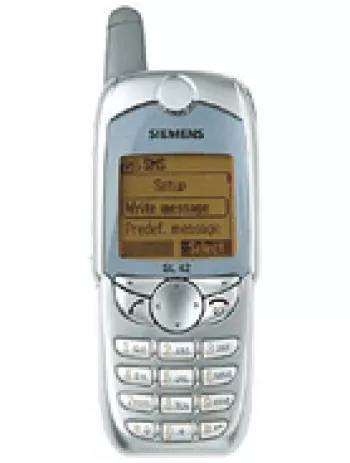
Overview of Siemens Xelibri 3
The Siemens Xelibri 3 was announced in the second quarter of 2003 and represents a unique product in the mobile phone market of its time. It was part of Siemens' Xelibri line, which was designed to merge fashion and technology, offering visually striking phones that stood out for their design rather than their technical features. The Xelibri 3 was positioned as a lifestyle accessory as much as a communication device, reflecting the early 2000s trend of personal expression through technology.
Design and Build
The Siemens Xelibri 3 boasted a compact and lightweight design, measuring 74 x 43 x 20 mm and weighing just 55 grams. This petite size made it extremely portable, fitting easily into pockets and small bags. The phone's design was distinctive, aiming to appeal to fashion-forward consumers. It featured a minimalistic interface with a monochrome graphic display, which was typical for feature phones of its era.
Display
The display of the Siemens Xelibri 3 was a monochrome graphic screen with a resolution of 101 x 56 pixels and allowed for viewing five lines of text. While the display might seem limited by today's standards, it was adequate for basic functions like calling and messaging, which were the primary purposes of the phone. The display size and technology reflected the limited usage capabilities intended for such a design-centric phone.
Network and Connectivity
As a feature phone, the Siemens Xelibri 3 was designed to operate on GSM 900 / 1800 bands, adhering to the 2G mobile communication standards. The phone did not support GPRS or EDGE, meaning it lacked mobile internet capabilities. This was not uncommon for phones of its category, especially those focusing more on the design aspect rather than technological prowess.
Memory and Storage
The Siemens Xelibri 3 came with limited memory capabilities, typical of feature phones of the time. It could store up to 100 contacts in its phonebook and kept records of the last 10 dialed, received, and missed calls. There was no support for expandable storage through a card slot, emphasizing its function as a basic communication device.
Sound and Alerts
The phone did not include a loudspeaker or a 3.5mm headphone jack, focusing instead on portability and style. Its alert mechanism included vibration and downloadable monophonic ringtones, offering customization to some degree. The lack of advanced sound features highlights its primary role as a talk-and-text device.
Battery Life
Equipped with a removable Li-Ion 620 mAh battery, the Siemens Xelibri 3 offered decent battery life for a feature phone. It provided up to 300 hours of standby time and up to four hours of talk time, which was sufficient for day-to-day use considering the phone's limited functionality, which did not demand high power consumption.
Additional Features
The feature set of the Xelibri 3 was relatively sparse, reflecting its design emphasis. It supported SMS and EMS for messaging but included no games or Java support, and it lacked advanced features such as sensors, positioning services, or radio.
Cultural Impact and Market Positioning
The Siemens Xelibri phones, including the Xelibri 3, were a bold experiment in blending fashion with phone technology. By focusing on aesthetics and creating phones that could double as fashion accessories, Siemens tapped into the early 2000s' inclination towards personalization and style in consumer electronics. However, despite their unique appeal, such phones faced challenges in a market that was increasingly moving towards feature-rich and practical devices, which eventually led to the discontinuation of the Xelibri line.
Conclusion
The Siemens Xelibri 3 stands out as a relic of early 2000s mobile design philosophy. It highlighted design and aesthetics over advanced technical features and served a niche market that prized individuality and style. While it lacked many functionalities of other mobile phones developing during the same period, its place in mobile history as a fashion-forward, minimalist device is significant, representing a unique intersection of technology and style in mobile phone history.
Key Features of Siemens Xelibri 3
- Compact and Lightweight: Dimensions of 74 x 43 x 20 mm and weighs only 55 g (1.94 oz).
- Basic Display: Monochrome graphic with a resolution of 101 x 56 pixels.
- Simple Phonebook: Stores up to 100 contacts.
- Efficient Call Records: Keeps track of 10 dialed, 10 received, and 10 missed calls.
- Removable Battery: Li-Ion 620 mAh battery offering up to 300 hours standby time and up to 4 hours of talk time.
- Custom Alert Types: Supports vibration and downloadable monophonic ringtones.
- Messaging Support: Capable of sending SMS and EMS messages.
- GSM Technology: Operates on GSM 900 / 1800 bands.
Disadvantages of Siemens Xelibri 3
- No GPRS or EDGE support
- Discontinued status
- Monochrome graphic display
- Lack of external memory card slot
- Limited phonebook capacity of 100 contacts
- No camera feature
- No loudspeaker or 3.5mm headphone jack
- No Bluetooth, WLAN, or GPS support
- No radio functionality
- No USB connectivity option
- Lacks support for Java applications
- No built-in games

View Also
More Phones
All Rights Reserved +14266 Phones © Mobilawy 2025

























